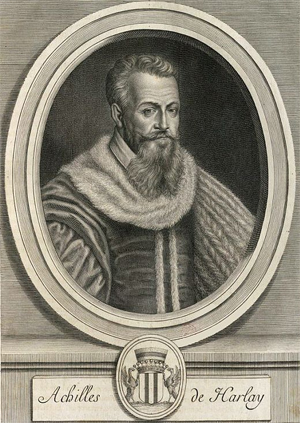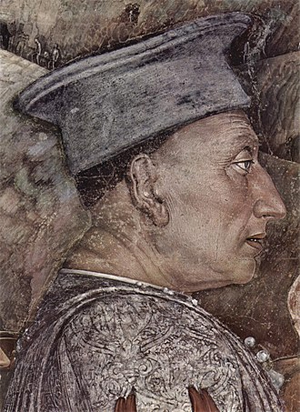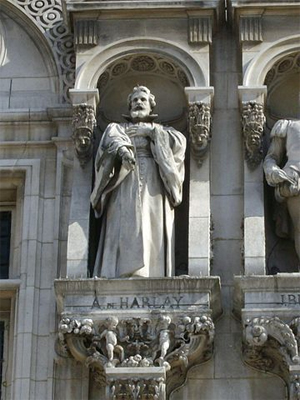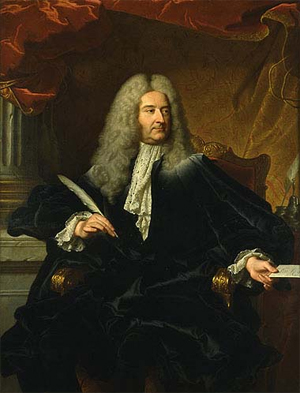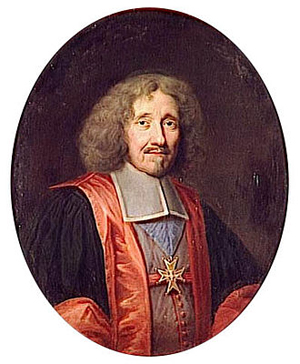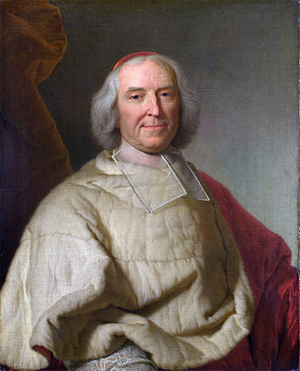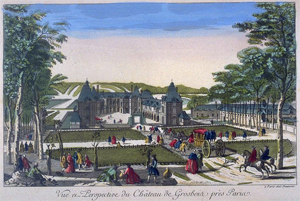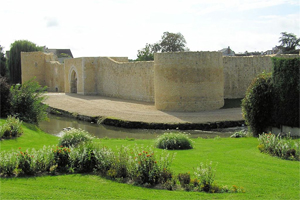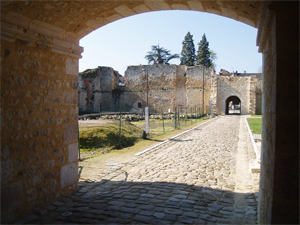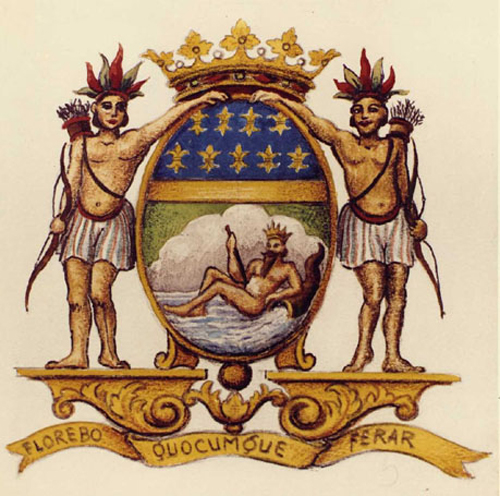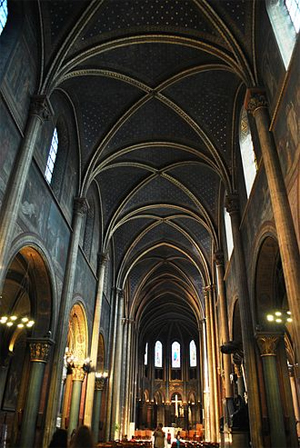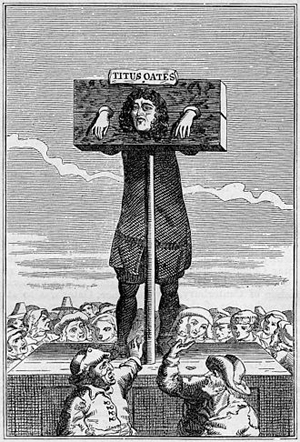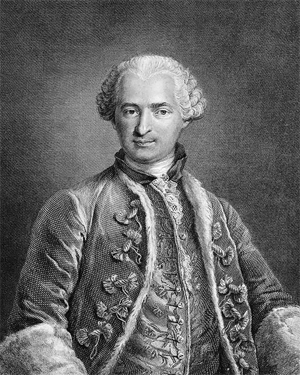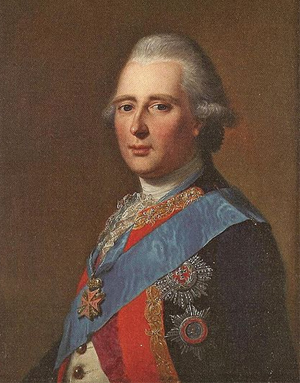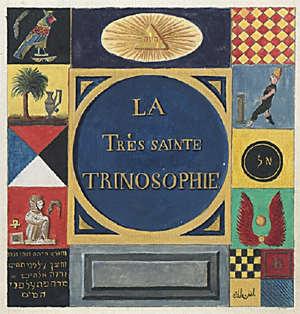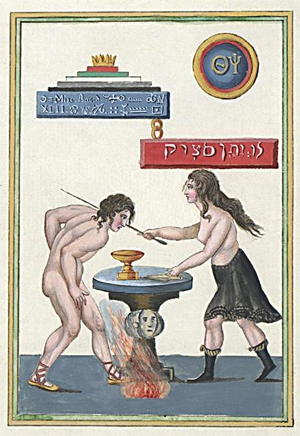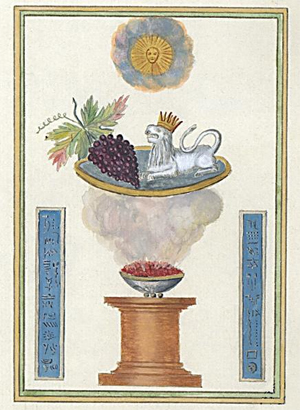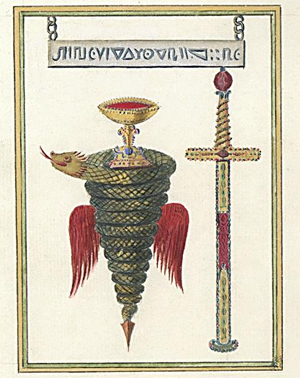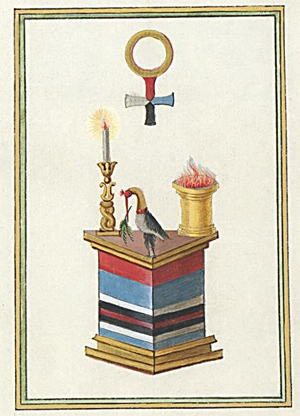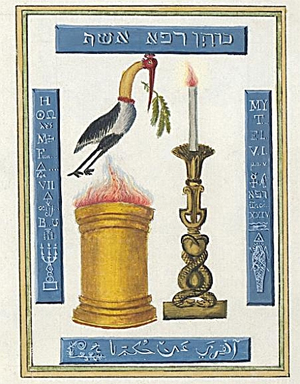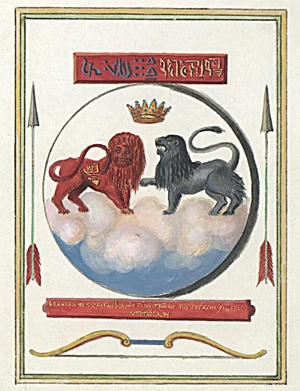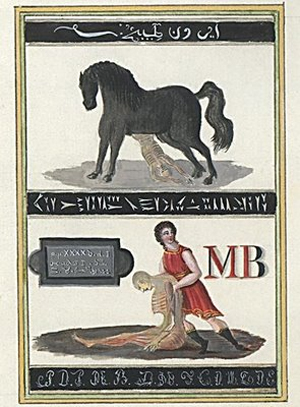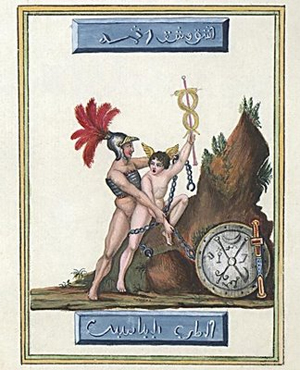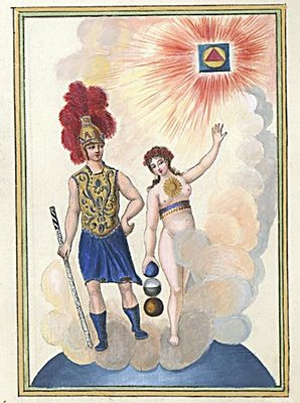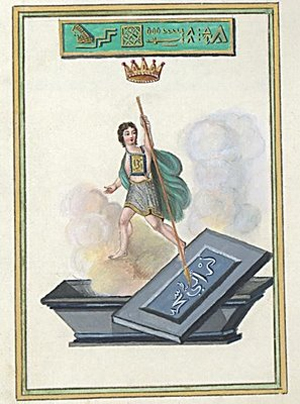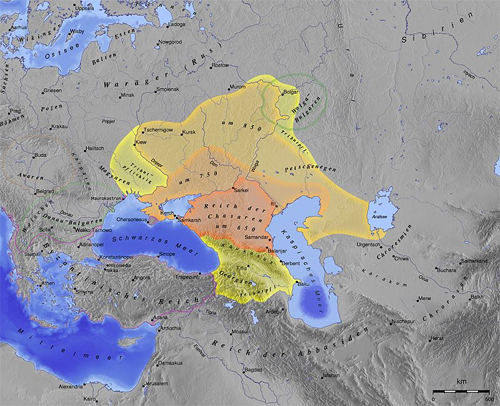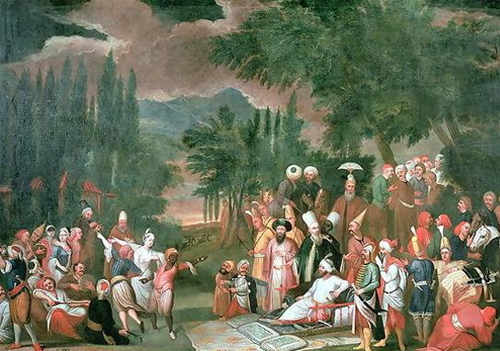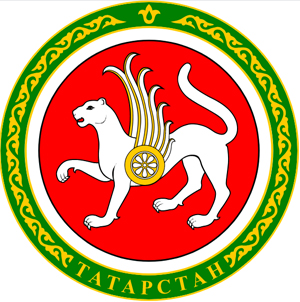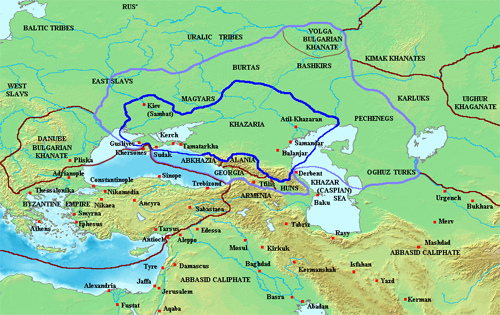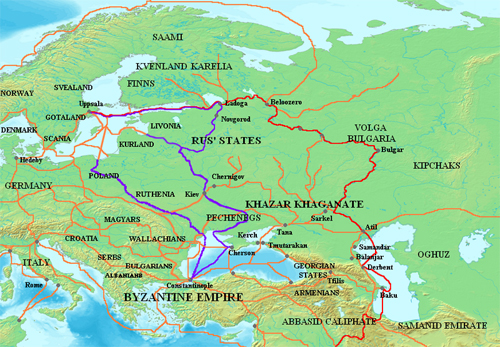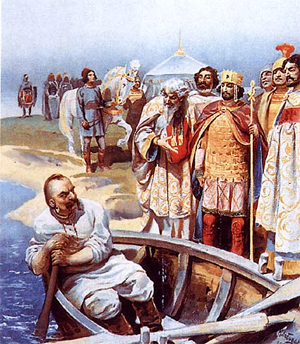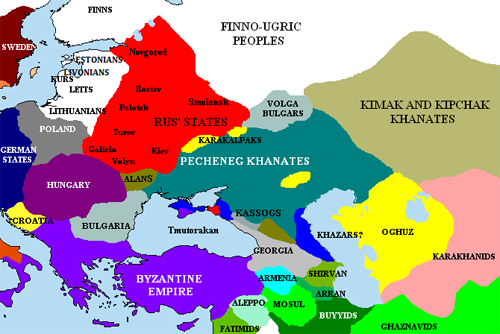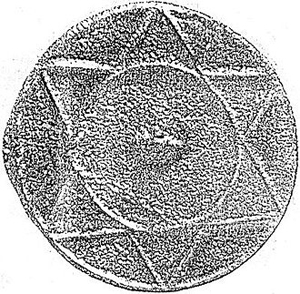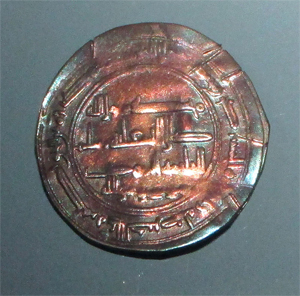Edited with an Introduction by Ludo Rocher
W. Norman Brown Professor of South Asian Studies, University of Pennsylvania
© 1984 -- John Benjamins B.V.
NOTICE: THIS WORK MAY BE PROTECTED BY COPYRIGHT
YOU ARE REQUIRED TO READ THE COPYRIGHT NOTICE AT THIS LINK BEFORE YOU READ THE FOLLOWING WORK, THAT IS AVAILABLE SOLELY FOR PRIVATE STUDY, SCHOLARSHIP OR RESEARCH PURSUANT TO 17 U.S.C. SECTION 107 AND 108. IN THE EVENT THAT THE LIBRARY DETERMINES THAT UNLAWFUL COPYING OF THIS WORK HAS OCCURRED, THE LIBRARY HAS THE RIGHT TO BLOCK THE I.P. ADDRESS AT WHICH THE UNLAWFUL COPYING APPEARED TO HAVE OCCURRED. THANK YOU FOR RESPECTING THE RIGHTS OF COPYRIGHT OWNERS.
New Contributions to Ezourvedam Interpretation
The French Original
There may have been differences of opinion on the language in which the original EzV was written -- generally Sanskrit, occasionally Bengali or Tamil --, but the idea that there has been an original in an Indian language which later served as the basis for the French translation, has been unanimously accepted by all those who have written on the EzV so far. According to Langles (1825:2) the writer of the manuscript at Pondicherry has taken care to provide a French translation face to face, better to create the impression of an original Sanskrit text accompanied by an interpretation in a Western language. Even though Laouenan accuses Ellis of having made the Sanskrit original disappear at Pondicherry (see p. 54), he too cannot get away from the idea that what we possess is nothing more than a translation, and he speaks (1884:244) of "the book, sent to Europe together with a French translation." I have already quoted Schlegel's enthusiasm about a seventeenth century European being able to compose attractive Sanskrit verses, and Hosten's pride that a member of the Society of Jesus has been a pioneer of Sanskrit studies. Others have not hesitated to make very precise statements on the Sanskrit original. Max Muller (1861:148n) says that "it is in Sanskrit verse, in the style of the Puranas." Mansion (1931:19) went one step further and actually talked about the quality of the author's Sanskrit; he described the EzV as "a recent compilation in Sanskrit verses, which are not always correct." Japp's comparison of the phraseology, style and even handwriting of the EzV with those of the real Vedas, and the details he provides on the spread of the text in panditic circles have been cited in the chapter on Roberto de Nobili.
In the meantime, no one has paid attention to a detail in Ellis' description (1822:19·30) of the manuscripts at Pondicherry. In fact Ellis himself refers to it in a most casual way, and certainly did not draw any conclusions. I have already mentioned that the Sanskrit and French texts of the pseudo-Vedas are written on opposite sides of European style copy books. The detail I want to point out at this stage is that the French side is consistently complete, whereas the Sanskrit side is not. For instance, manuscript No. 5 (Ellis 24-5) is only partly in Sanskrit. And manuscript No. 1 (Ellis 19), which is the one we are particularly concerned with, is: "A copy of the Ezour Vedam in French only." Also, No. 2 (Ellis 19-20), which contains the EzV among several other texts, is: "All in French without the Sanscrit."
To be sure, it is conceivable that the scribe accidentally wrote the French "translation" first and intended to fill in the "Sanskrit original" later. Caland (1918:293) is one of the very few who noticed the absence of a Sanskrit text yet "even though Ellis did not find the Sanskrit original of the 'Ezourvedam' in the collection of manuscripts, it seems to me highly probable that it once existed, and that our Ezourvedam has been translated from a Sanskrit text." Laouenan (1884:245) suggests nothing less than that Ellis was the one who made the Sanskrit text disappear: "the Sanscrit manuscript, which was in the library at Pondicherry in 1816, was handed to Ellis, the Principal of the College of Madras, for examination; he did not return it." Castets (1935:12n2) rightly rejects this unfounded accusation.
There is, however, another possible explanation for the absence of a Sanskrit EzV in the library at Pondicherry. Against the unanimous tradition held by all those who have written on the EzV in the past I suggest that the French text of the pseudo-Vedas is the original one; that the French originals were meant to be translated into an Indian language; that translations were indeed made or at least started for some of the texts, but not for the EzV. In addition to the absence of a Sanskrit text in Pondicherry, there are other arguments that support this conclusion.
First I question the logic of EIlis' (1822:4) reasoning: "as the object of it is undoubtedly that stated by Mr. Sonnerat, namely to refute the doctrines of the Puranas and to lead indirectly to the introduction of Christianity, it was evident that to attain this object it must have been originally composed in one of the Indian dialects." Assuredly, to convert Indians it had to be written in one of their languages. But once this task accomplished, the purpose of the enterprise had been achieved. One may indeed wonder why the Indian text had subsequently to be provided with a French translation.
Second, the French text is far too fluent and idiomatic to be the result of a translation from Sanskrit. I shall repeat here at a more general level the question which Less (1784=1786:419·20) asked with regard to the prayer which Visnu is supposed to address to the deity above him (Text p. 125): "Who would not believe to be reading Flechier or Massillon?"
Third, about the Sanskrit portions of the manuscripts Ellis (1822:22) has this to say: "The Sanscrit part of all these manuscripts contains many alterations and variations of reading in the same hand, either inserted in the margin or interlined." And he interprets: "these sometimes correct, sometimes alter the sense and are such as an author would make to an original work." A different and more likely interpretation is that the French text was the original one, and that emendations in the Sanskrit section are corrections added by the translator who tried to make his work more perfect and accurate.
Finally, at the meeting of the Asiatic Society of Bengal (2 February 1848) a letter by John Muir was read; it contains (163-4) the following passage: "I suggested to the Society several years ago that an attempt should be made to procure for the Library the original Sanskrit text of that curious work the Pseudo-Yajur-Veda, (of which some account is given in a paper by Mr. Ellis in one of the earlier Vols. of the Society's Researches, as well as in the English preface to Dr. Mill's Sanskrit poem, the Christa Sangita) which the Roman Catholic missionaries composed several centuries ago to promote the reception of Christian doctrines. A French translation of this Pseudo-Veda or part of it, appeared at Yverdun towards the close of last century, which is perhaps in the Society's Library: but it appears very desirable that we should possess the original of so curious a work. In consequence of my former suggestion, Dr. Wilson of Bombay was requested to use his endeavours to procure a copy; but I do not recollect to have heard the result. If no effective steps were taken towards the end in view, I would beg to suggest that the attempt should be renewed, and application made to any of the Society's correspondents in the Madras Presidency, or in any quarter which may seem most likely to promise success. It was in the College of Jesuits at Pondicherry, if I recollect right, that the manuscript was said to be deposited; and perhaps that establishment may have broken up at the period of the French Revolution or from subsequent causes. If this, on enquiry, appear to be the case, the fate of the Library, and its present place of deposit, if still in existence, might be traced." As a result of this letter, it was "Resolved, that M. E. Ghibelin of Pondicherry be requested by the Society to institute the search for the Pseudo-Yajur-Veda, recommended by Mr. Muir." It should come as no surprise that the Sanskrit original of the EzV was never found.52
The Author of the French Ezourvedam
If the French version of the EzV was the original one, the question remains: who was its author? My answer to this question will be different in nature and precision -- or lack of it -- from those of my predecessors. They were looking for an author who knew Sanskrit; since most of them were led to reject an Indian author, the choice was limited. Hence the names of de Nobili, Calmette, Mosac, and a few others. I am trying to determine the author of a French text, which leaves a far wider range of possibilities, both among the Indian converts and the French residents in India. Even though I shall no longer propose a specific name, I shall at least try to circumscribe the group to which the author of the EzV must have belonged.
There are good reasons to look for the author among Europeans rather than Indians. First, those pseudo-Vedas of which a Sanskrit version is preserved, "are in Sanscrit, in the Roman character" (Ellis 1822:4). Ellis noticed this fact and tried to interpret it (32): it was the work of the anonymous author who elaborated the notes of de Nobili and who also translated the text into French. "This supposition ... explains why the Sanscrit does not appear in its appropriate character and orthography, in which it is difficult to suppose it was not originally written by the author." In reality, the "many alterations and variations of reading in the same hand" (22) in the romanized Sanskrit sections clearly show that we witness the author-translator at work. Under no circumstances could this be an Indian, no more than one imagines a native Greek writing and correcting his own language in Roman script, or an Englishman producing English literature in Devanagari.
Second, and even more convincing, is the particular way in which Indian proper names and other terms have been transliterated in the pseudo-Vedas in general and the EzV in particular. Bohlen (1830:135) thought that the "highly corrupt transliteration" of Indian proper names was due to the influence of Italian orthography. This assumption may have been helpful to attribute the text to Roberto de Nobili, but it is totally unfounded. Ellis came much closer to the truth, although the transliteration system leads him to make apparently contradictory statements. On the one hand he quotes (1822:30) the opinion of "the more respectable native Christians of Pondicherry ... that these books were written by Robertus a Nobilibus;" also, in the passage quoted earlier in this volume (see p. 31), in which he defends de Nobili against a possible accusation of forgery, he repeatedly refers (31) to a Sanskrit original written or at least translated in South India. On the other hand, he rejects (3) Sonnerat's location of the EzV at Masulipatam, "all the Sanscrit terms used in it, being altered according to the Bengali pronunciation." Later in his article he quotes (12) an example of pseudo-Vedic Sanskrit, and concludes: "This specimen of the original will suffice to convince those acquainted with the Sanscrit and with the changes it undergoes in the Pracrits and spoken dialects, that this work, whether the author were a Native or a European, must either have originated in the province of Bengal and Orissa, or have been composed by some one, who had there learned the rudiments of the Sanscrit." Ellis' insistence on the Bengali orthography of the pseudo-Vedas has later been used by Hough (1839:2.239) to show that Masulipatam is unacceptable as their place of origin, and by Vinson (1902:293), Zachariae (1921:157), Charpentier (1922:138), and others to prove that the EzV cannot be the work of de Nobili, who worked in South India. It has also led to pure misunderstandings, such as the one by Debidour (1924:30): "The Ezour Veidam ... was a manuscript in the Bengali language;" what Ellis really said (3) is that, while inspecting the printed text, he concluded that the work was in Bengali. Equally mistaken is Vinson (1923:169), when he concludes that the French version is a second hand translation, from Sanskrit via an intermediate Bengali translation!
In reality, the transliteration system of the EzV exhibits a strange but interesting mixture. There are indeed a number of transliterations that suggest Northeastern pronunciations: Chumontou, Biache, Prokriti, Chib, Gonecho, Zomboudipo, Baroto Borcho, Narodo, Odorbo, choto-rozo-tomo, Narajon, Kochiopo, Zomo. But there are also several equally typical South Indian forms: Ezour Vedam, tarkan, Pouranans, Vichnou, Patalan, Salagraman, Veikuntan, Keilassan, amroutan. On a number of occasions the two transliteration systems have been combined within the same word: Oupabedan, Chuarguam; or within the same sentence: "the summit of mount Chumerou is Veikuntan, the residence of Narajon" (Text p. 122). Renou (1946:41) is the only one who has noticed this mixture and drawn from it the interesting conclusion referred to earlier in this study: a Sanskrit original written by a Bengali, and a French translation by a South Indian. Yet it is difficult to agree with Renou. Either the original was written in an Indian script; if this was the case, we cannot account for the Bengali transliterations on the part of the South Indian translator: the text written by a Bengali, even in his own Bengali script, has nothing to do with the way in which he would eventually pronounce it. Or the original was written in Roman transliteration; in this case the Bengali author would indeed have given all Indian terms according to his own pronunciation, but we can rest assured that the South Indian translator would have replaced all Bengali pronunciations by his own. I cannot accept that an Indian author of the French EzV would have resorted to two systems of transliteration, one Bengali, the other South Indian. He would systematically adopt a single system: the one that reflects the pronunciation in his own area of India. Two systems of transliteration definitely point to a European author, one who had heard Sanskrit words pronounced in different parts of India, or at least had been taught these terms by Indians coming from different parts of the subcontinent.
A third argument against those who believe in an Indian author for the EzV is provided by the text itself. I refer here to several passages which definitely point to a European writer. Near the end of the book (Text p. 203) Chumontou says, in a very European way: "The desire to undeceive mankind and to save them, this is the sole incentive that made me undertake this work; therefore I have consulted nothing but the truth. It alone has guided my quill, has inspired me ... " On a number of occasions the text alludes to situations which are strictly European. Thus (Text p. 163) Mount Mandara revolves on Narayana's shoulder" even as the mill rotates in a coffee maker;" or, it is surprising that the offspring of a tall man is "like a dwarf or a pygmy" (Text p. 184). Dates are sometimes indicated according to the solar rather than the lunar calendar. There is a reference to "those who fast on 14 January" (Text p. 178). Sainte-Croix adds notes to "the month of December ... the month of June": "Margam or Margisaram of the Indian year," and "Jeistrum or Any," respectively (1778:1.256; Text p. 128). When the manuscripts say that "the Indian hour has only twenty-four minutes," Anquetil notes in the margin: "This is a European speaking here;" the edition (1.266; Text p. 131) prefers to delete the word "Indian." Again in the same paragraph there is a description of an Indian instrument to measure time and a reference to "our twenty-four hours." Anquetil repeats the same marginal note; Sainte Croix places the entire passage in a footnote, with the remark: "This explanation of how the Indians measure time has been inserted by some European. I have considered it my duty to delete such an evident interpolation." And he resorts to the same solution for other "European" sentences, such as when the text says about Mago: "This month corresponds to the month of December" (2.35; Text p. 157), or about Maguodechan: "This land is West of Chandernagor, and is about 125 days away from it: (2.163; Text p. 197).
That the European author of the EzV was a Frenchman requires no further proof. I have already referred to the fluent and idiomatic language of the French text "which reads like that of Flechier or Massignon." Besides, the Sanskrit terms are consistently transliterated in such a way as to adapt them to the pronunciation by speakers of no other European language than French.
Next, I consider it a very likely hypothesis that the French author of the EzV was a missionary. Some modern authors have unnecessarily tried to deny the proselytic character of the text. I have already quoted Mansion (see p. 24). In Castets' (1935:6) opinion too, "the mass of disparate and purely Hindu concepts exhibited in this book, and agreed to by Chumontou, the so-called missionary disguised as a Brahman, in no way resembles Christian concepts." On this point I agree with the majority of those who have written on the EzV. Not only would a missionary be the only one to be interested in composing such a means of conversion; he would probably, at that time, also be the only one to make the effort of learning enough about Hinduism to be capable of writing this kind of interesting and ingenious composition.
Finally, the French missionary most probably belonged to the Society of Jesus. Hosten's "hideous calumny" (see p. 47) and the emotional denials by others are based on the premise that the composition of the EzV and the other pseudo-Vedas was a despicable act. I shall indicate later that there was much more to it than that. There was certainly no doubt on this score in Maudave's mind, in his unpublished letter to Voltaire. Also, the manuscripts were discovered in the former house of the Jesuits in Pondicherry, and the composition of the French Vedas is not in disagreement with Jesuit conversion methods as they have been applied both in India and elsewhere in the world.
The question who the French Jesuit author of the EzV was, we can only speculate on. Calmette was very much involved in the search for the Vedas; Mosac is a definite possibility; there may be some truth to Maudave's information on Martin; there is no way of verifying the references to de Villette and Bouchet. The author of the EzV may be one of these, but he may also be one of their many more or less well known confreres. In the present state of our knowledge we cannot go any further than that.
The Title: Ezourvedam
It is important to remember that the EzV came to Europe at a time when practically nothing was known about the Indian Vedas.53 Even when authors such as Sonnerat and Paulinus began to question the authenticity of the book, they had very little to compare it with. Joseph de Guignes in two passages quoted earlier (1772:313; 1776:205) was probably the first one to identify the EzV with the Yajurveda, although there is, a few years earlier, Clemence's (1767:49) remark in his critique of Voltaire's Philosophie de l'histoire: "If we were to believe him on the antiquity he assigns the Ezourvedam, which is the second of the four parts that compose the Vedam ...." Sonnerat (1782:1.215) states that "it is definitely not one of the four Vedams, notwithstanding its name." According to Lanjuinais (1810-1832:1.35) EzV is "a corruption of Yadjour-Veda, in Malabaric Yezourvedam, the second book of the Vedas." Ellis' note (1822:4; compare already anon. 1818:189): "Besides the Ezour-Vedam, there are also, among these manuscripts, imitations of the other three Vedas," implies that he too considered the EzV to correspond to the Yajurveda.
The identification enters the field of indology with Schlegel. His casual remark (1824:51): "Ezour Vedam (after a corrupt pronunciation of Yajurveda)," has been accepted by all and has never again been questioned. Langles (1825:2nl) too mentions that "Ezour Vedam is a corruption for Yadjour Veda," and repeats (2) that Ellis also found manuscripts of forgeries of "the other three Vedas." Bohlen (1830:1.134) casually refers to "a treatise called Ezourvedam, as they corrupted the name Yajurveda." Adelung (1830:93-4; 1832:75-6; 1837:120-2) discusses the EzV in the chapter on the Yajurveda. Muir's letter (1848:463) refers to "that curious work. the Pseudo-YajurVeda," and Mitchell (1849:132n) points to "Asiatic Researches XIV for the account of the pretended Yajur Veda." Weber (1853:235) seems to assume that the term Elz refers to the Yajurveda, and he insists on the difference between the French text and the false Yajurveda which is the object of his own language." I have indicated earlier that Paulinus a Sancto Bartholomaeo (1791:315) also realized that the EzV was different from the Yajurveda.
The situation in the manuscripts is complex and confused. Voltaire's copy, as it was carried to Europe, definitely bears the title "Ezour-vedam." Yet, Ellis (1822:19) describes his manuscript No. 1 as follows: "A copy of the Ezour Vedam in French only, probably the original whence the transcript was sent to France was made, as the original title of the work, 'Jozour Bed,' which appears at the head of the first page has been crossed out with a pen and the words 'Ezour Vedam,' as it stands in the printed book, written above it." Anquetil's manuscript also bears the title "Ezour vedam," but its final section, which is missing in Voltaire's copy, is introduced: "Continuation of chap. 3rd (Book VIII) of the Ezour Vedam (Zozur Bedo in the copy of Mr. Tessier) ... " Accordingly, the same final section, added by a very different hand in Voltaire's copy after it became Nouvelles Acquisitions Francaises 452, is called "Continuation of the Zozur Bedo," and Court de Gebelin's remarks in the same manuscript (see p. 83) are labeled: "Note on the Zozur Bedo."
All this seems to indicate that the original title of the volume was "Zozur Bedo" rather than "Ezour Vedam." However, when the four Vedas are described in chapter 1.4, Chumontou says (Sainte-Croix, 1778:1.200, cf. text p. 114): "God dictated them to the first man, and instructed him to communicate them to the other human beings, that they might learn to do good and avoid evil. These are the names by which they were indicated: the first is called Rik, the second Chama, the third Zozur, the fourth Odorbo." Again, later in the same chapter Chumontou states (1778: 1.204, cf text p. 115): "Poilo was the author of the Rik Vedam, Zoimeni of the Chama-Vidam, Chumontou of the Zozur-Vedam, Onguiro finally of the Adorbo-Vedam." Both Anquetil (fol. 8 recto) and Sainte-Croix (1778:1.204n) were confused by one Chumontou speaking about another: "This Chumontou is different from the Brame who is speaking here; the former has given the Zozur-Vedam, not the Ezour-Vedam which is by this second Chumontou." I should add that, in the second passage, the manuscripts even increase the confusion; they do not read "Zozur-Vedam" but "Ezour vedan" (cf. p. 86). Sainte-Croix was probably right when he corrected this inconsistency, which must have been introduced by a scribe -- the scribe of Voltaire's manuscript(?) -- who was as confused as Anquetil and Sainte-Croix by the existence of two different Chumontous.
In any case, the way in which the four Vedas are mentioned in the text makes it clear that the manuscript that came to Europe was meant to represent something different than one of the traditional four branches of the Indian Vedas.
Moreover, one of the manuscripts discovered at Pondicherry -- No. 3 in Ellis' description (1822:20-3) -- contains three parts: Rik Beder Chaka, Zozur Beder Chaka, and Chamo Beder Chaka. That means that the Yajurveda was represented in the Pondicherry collection by the Zozur Beder Chaka, and that it is unlikely that the EzV was supposed to play the same role.
Also. it is obvious from the text of the EzV itself that its author wanted it to be more than a Vedic sakha. The EzV refers to itself as "the Veda" without specification. When Biache asks for Chumontou's help, the latter hesitates (Text p. 110) whether he should instruct him or not: "Why do you come to me today and request me to teach you the Vedam, and to instruct you about the truth?" The question clearly indicates that the instruction which Chumontou is about to impart, namely: the EzV, is thought of as "the Veda." Again, Chumontou lists (Text p. 110) a number of conditions for his teaching: Biache shall no longer call Brahman, Visnu, Siva, Ganesa, etc., gods; he shall no longer distinguish between men; etc. "This, then. is the first preliminary step to be taken, for you to acquire the right disposition to understand the truths contained in the Vedan, and to appreciate them." The truths contained in "the Vedan" are, of course, the truths contained in the EzV. In another passage (Text p. 203) it is said "While giving us his laws, God has shown us the road to be followed in order to obtain the eternal award. The book that contains this law is called Vedan. In reality there is but one Vedan; but since four different individuals have divided it among themselves to teach it to mankind and to transmit it to posterity, the book has been given four names, indicating the different matters treated in each of them." Here too there is no attempt to rank the EzV among these four.
Finally, though the passage in one of Voltaire's letters is difficult to interpret, it seems to indicate that he too considered his manuscript to be more than just one of the four branches of the Veda. He writes (Best 8713) to a friend: "An officer who commands a fortress near the Ganges and an intimate friend of one of the principal Bramins has brought me a copy of the four Vedams which, he assures me, is very faithful." Voltaire may well have received this information from Maudave. In his unpublished letter to Voltaire Maudave not only says that he personally believes in the antiquity of the Sanskrit language "and of the Ezourvedam" (p. 3); he also argues against the Jesuits, who maintain to have discovered Latin words in the Vedas, and concludes (p. 4): "Therefore, I am fully convinced that the brames who wrote the four books of the Ezourvedam did not know Latin."
What was the EzV really meant to be?
I shall begin with the element Vedam. There are sufficient indications that, in the eyes of Europeans, the Veda was for the Hindus what the Bible or Gospel was for the Christians. Bach (1868:17) refers to one of Beschi's writings, Veda-Vilakkam, and adds: "which means: 'Light of the Gospel.'''54 La Croze (1724-1758:2.222) speaks of the Vedam "which is a collection of ancient sacred books of the Brachmans;" elsewhere (1724=1758:2.251) he states that the Veda "has among these idolaters the same authority which the Holy Scripture has among us." Paulinus had his own views on the term Veda, but the following passage (1796-1808:320) shows that for him too, the Veda was not something specifically Hindu; the term can be used for Christianity and other religions as well: "This word ... does not signify exclusively a sacred book but implies in general as much as a sacred law, whether observed by Indians or other nations. Thus, for example, the law or religious system of the so-called Nazarenes, or Christians of St Thomas, is called Nasranni Veda, and the Jewish law Judhaveda."55 Even more significant than the statements by authors directly concerned with India is the opinion of the general historian of religions, who had no access to Indian sources, but reflects the overall atmosphere created by contemporaneous writings on India. According to Less (1784=1786:417), the "Schaster" contains "explanations of the Vedam, the Bible of the Bramins." Voltaire himself was convinced that Maudave brought him "the Gospel of the ancient bracmans" (Best 8870). Besides, I shall also quote the following entries in the University of Madras Tamil Lexicon:
vetam 1. The Vedas; 2. The Jaina scriptures; 3. The Bible; ...
veta-k-karan Christian (the only meaning!)
veta-pustakam 1. The Vedas; 2. The Bible.
veta-vakkiyam l. Vedic text; 2. Gospel truth.
veta-viyakkiyanam 1. Commentaries on the Vedas; 2. Expounding the Bible.
Let us now turn to the element Ezour. Within the complex transliteration system of the EzV referred to earlier in this study the term °vedam shows that "Ezourvedam" belongs to the group of words which the author acquired via a Southern pronunciation. The logical assumption is that the element Ezour° also has been coined so as to be pronounced in the Tamil way. Vinson (1923:170), who otherwise follows Charpentier (1922:138) in assigning the EzV to Bengal and Mosac, has noticed that "Ezour-Vedam is a Tamil word." He correctly refers to the fact that "the phonetic habits of Tamil require that a long or short initial e be preceded by a y," and he uses this argument to identify the EzV with the Yajurveda. It is, however, possible to give a different meaning to the term Ezour, keeping in mind that in it the Yajurveda is called Zozur Bedo, that the EzV pretends to be far more than one of the four branches of the Veda, and that, consequently, Ezourvedam ought to indicate something different. I propose that, after dissolving the Sanskrit sandhi, Ezour stands for Y-ezous. i.e. Jesus, in the Latin pronunciation which was common among missionaries. Once again, the Tamil Lexicon supports this hypothesis; one of the forms used for Jesus is ecu.
Consequently, Ezourvedam is a subtle and disguised way of indicating what the book really meant to be: "the Gospel of Jesus." The fact that the South Indian pronunciations of Yajurveda came close to it may have played a role in the choice of the term; they provided a convenient disguise for the real meaning of the title. But we should, above all, not forget that the artifice would not have been possible without the general ignorance and confusion, at that time, with regard to the real titles -- and contents -- of the four Vedas. The titles were overheard in different parts of India, which implies very different pronunciations, by Europeans who noted them down, as carefully as they could, but each of them according to the specific spelling of his own mother tongue. Their more or less clearly written Indian terms were copied, often more than once, and eventually printed, by individuals who knew nothing at all about the subject, and who often misread the original words and distorted them even further.56 I am also convinced that the EzV -- and the prestige it initially enjoyed -- in its turn contributed to the confusion. I have already referred (see pp. 11-12) to de Guignes' erroneous identification. Sonnerat too, reports (1782:1.209) that the Vedas are called: Iroukou, Issourou, Samam, and Adrenam. But he adds in a note: "They are also known as Roukouvedam, Isrou or Ezourvedam, Sama or Chamavedam, and Andernam or Andernavedam." More recently Omont57 mentions, among the manuscripts sent to Paris by the Jesuits in India "Three books of the Ezour Vedam." But when Fourmont51 described the manuscript, he noted: "A paper manuscript containing a work entitled Ejour-vedam." This latter has at least the advantage of corresponding to one of the Vedas listed by Calmette, in a letter of 1731 (Vinson 1902:290).59
An Evaluation
Much has been made in later literature of so-called errors in the EzV. Sonnerat (1782:1.215) already said, about the missionary who composed the text, that "he did introduce a few errors, though, so that one would not be able to recognize the Missionary under the disguise of a Bramin." Whereas Sonnerat referred to errors against the Christian dogma, others have been upset by inaccuracies in the text on points of Hindu religion. Langles (1825:3-4), for example, aims his scorn both at the "archibrame of Cheringam" and at the missionaries: "He who knows the obsequious nature of the Hindus and their natural propensity to imposture, will in no way be surprised to see that the archibrame of Cheringam obligingly backed the pious imposture of the missionaries, even at the expense of his own religion. In fact, one might be led to think that he has attempted to extenuate his literary sacrilege or perhaps forestall its disastrous effects, through grammatical errors and numerous antibrahmanic propositions which he has scattered all over his composition. For, the imposture is revealed no less by its very content than by the original text inserted in the manuscript. How could these forgers be so inconsiderate as to place right near their misdeed something that to any reader versed in the languages of India would appear like incriminating evidence? It is hard to understand ... Besides, it does not really matter to know who were these impostors, dupes of their accomplice, both clumsy proselytists and poor erudites." I have already quoted Charpentier's (1922:137-8) rejection, on the one hand, of an Indian author on account of "serious errors," and, on the other hand, of Nobili who "would never have written a book so full of errors and displaying such an ignorance of the sacred language of the Brahmins." Vinson's article of 1923, which leans heavily on Charpentier, continues along the same lines; there are, in the EzV, "errors and inaccuracies which show that the author was not too well acquainted with brahmanic mythology" (1923:171). Of this Vinson quotes two examples: "It is said that humanity descend from a single couple and that the first man was called Adimo. No Sanskrit book says anything of the sort. ... Similarly rebirth is categorically and emphatically rejected; yet, it is the official and basic foundation of all Indian philosophical systems." And he generalizes (1923:171-2): "It has often been a serious default of the missionaries not to have adequately studied what they wanted to refute. They are incapable of discussing on equal terms with the learned, the well-educated, and the members of different castes, among whom they make very few proselytes." These accusations are highly unjustified. They are baseless as far as the -- inexistent -- language of "the original" EzV is concerned. Insofar as they relate to the content they fail to do justice to the performance of the author, and they display a lack of understanding of the purpose for which the book has been composed.
1 have shown how astutely the title of the book has been chosen. And, if one reads the text carefully, it is clear that it is full of equally clever and subtle constructions. Throughout the text the author -- more exactly, the interlocutor Chumontou -- makes use of Indian terminology and Hindu concepts. But he skilfully manipulates them, first, to justify and establish "the Vedam" as superior to the idolatrous beliefs personified by Biache, and, on that basis, to expose the contents of that Veda -- the Christian teachings -- even if they run opposite to Biache's statements.
A case in point is the use made by the author of the Hindu system of yugas. This is how Biache describes (Text p. 108) the present age: "The unhappy era in which we live is an era of sin. Corruption has become general. A limitless ocean has engulfed everything. Only a few virtuous souls are kept afloat. All the rest has been carried away. Everything is corrupted. I myself am drowning, like the others, in this ocean of injustice, of which I perceive neither the shores not the bottom; I am bound to perish like them. Therefore, extend your helping hand; as an expert pilot pull me out of this abyss, and guide me safely to the port." The idea that we live in an age of sin and darkness had to be acceptable to any Hindu, who would immediately interpret it as a reference to the Kaliyuga. Trying to change the present situation and restore "the golden age" was not only a normal but also a most attractive idea. The golden age which Chumontou preaches is the one proclaimed in "the Veda," which is, in this case, the Christian Bible.
1 also have to disagree with Vinson's analysis of God's creation of the first man and woman. According to Chumontou (Text p. 112). "God created at first a single man and a single woman, who were to give birth to the rest of mankind." The use of the term Procriti as the name for the first woman shows the author's familiarity with Indian philosophy. And the name Adimo for the first man is an ingenious way of introducing Adam under the disguise of a perfectly acceptable Sanskrit term meaning "the first one." Voltaire was, understandably, surprised. He comments (1765:109-10): "What is even more extraordinary is that the Vedam of the ancient Bracmans teaches that the first man was Adimo and the first woman Procriti. Adimo Signifies Lord; and Procriti means life, even as Heva, among the Phoenicians and the Hebrews, signified also life, or the serpent. This conformity deserves special attention."
It must have become clear from earlier quotations that Father Hosten was one of those who did not hold the EzV in high esteem. He expresses (1921:500) his general evaluation of the pseudo-Vedas in the following terms: "That the Sanskrit itself could not have been composed by a Catholic Missionary was evident from the fact that no Catholic priest could have resigned himself to teaching merely a crude theism mixed with gross Hindu superstitions and all kinds of erroneous philosophic and scientific doctrines." Castets (1921:577), who disagrees with Hosten on other points raised in this article, fully subscribes to this statement. It comes as a surprise, then, to see the same Hosten on the same page of the article arrive at this conclusion: "These translations would certainly be worth printing; they contain in dialogue form expositions of Hindu beliefs and practices with very able refutations of polytheism; they are the work of a profound thinker, one who anticipated Ram Mohan Roy by at least a century."
This unexpected enthusiasm is as uncalled for as the accusations of errors and poor judgement on the part of the author. Whether or not the author of the EzV was "a profound thinker," we do not know. He certainly did not want to appear so in this particular composition. Both those who have praised and those who have denunciated the EzV have invariably lost sight of one fact: The EzV was not written in order to convert through it the learned and the highly sophisticated among the Hindus. In that respect it is totally different from most works of, say, Roberto de Nobili. One has only to read the text to see that it addresses itself at the uneducated -- or not highly educated -- masses.
For example, the author -- again very astutely -- uses (Text p. 171) the Hindu theory of world ages to justify his teaching the Veda even to people of low caste. The age in which we live is an age of sin and wickedness. But it has at least one advantage. In more virtuous ages much more was expected of the people: each caste, each stage of life had its own sacrifices, and had to abide by its own form of religion. "Today we are no longer subject to all this. Anyone who is pious can perform religious duties, and he can do so irrespective of time and place. Besides, in earlier times it was not allowed to teach the vedan to Choutres and the common people. That would have been a sin. Today it can be done, without fear or scruple."
Again and again Chumontou's arguments against Hindu beliefs are based on the kind of logic that could only convince those who were unaware that we are dealing here with mythological rather than real situations. It is impossible that, by drinking the Amroutam, the Hindu gods have obtained immortality in the Chuarguam. "For, if new ones continued to be born without any of them dying, their number would have become infinitely large, and for many centuries now they would have been unable to find space in the Chuarguam" (Text p. 169).
In fact, I tend to believe that the EzV was not meant to be translated into Sanskrit, in which case it would have reached no more than a small minority of learned Hindus. The French text (p. 186) seems to point to a Telugu rather than a Sanskrit translation. "Chumontou enumerates the names of all countries on earth; the curious will find them on the opposite page, in the Telegoa language."
The preceding evaluation of the EzV is, as we saw earlier, based on my conviction that the text has been composed by a Jesuit missionary. I therefore want at this point to address the question whether this amounts to adding another voice to the often repeated charge of Jesuit dishonesty in India. This charge, according to some Jesuit writers, should be and has been laid to rest. Koch's Jesuiten-Lexicon mentions (1934:278, 868-9) the fact that the EzV has been attributed to Jesuit missionaries such as de Nobili and Calmette; "the charge is traditional, but has never been proven," and "it is unlikely that a Jesuit has composed this '5th Veda.'" The Lexicon has in turn been quoted as an authority by Della Casa (1955:54n6).
Some Jesuits have written in highly emotional terms against the EzV. I have already quoted Father Hosten's reference to "a hideous calumny." The same author also states (1921:499) that "on a priori grounds, no Catholic Missionary could ever have been guilty of such dishonesty as we have been accused of." Castets' indignation (1935:48) at the suggestion of a Jesuit or European author echoes Hennings (see p. 49): "The fact that one has dared to attribute it, not just to missionaries, but to Europeans generally, can be explained only as the result of complete ignorance of the contents of these productions, or, as the case of Ellis shows, by the authors' inability to free themselves of ineradicable prejudice." Several years earlier Hosten (1921:499) had already called Ellis "the chief culprit in the accusations levelled against the Jesuits." Now Castets (1935:9-10) seems to suggest that the very purpose of Ellis' search for the EzV was to discredit the Order generally and Nobili in particular. "In 1816 a well-known indologist, Mr. Ellis, the Principal of Madras Government College, and a great searcher for manuscripts left by the former Jesuits of Madura, paid, for that purpose, a visit to the House of the Mission, formerly the Residence of the Jesuits at Pondicherry. Might it not be possible that the missionaries of the Foreign Missions, the present occupants of this ancient residence, and heirs to the documents left behind by the former Jesuits of the Carnatic, who took refuge with them, be the unknowing keepers of the Sanskrit original of the famous Ezour Vedam? The presence with them of such a document would confirm the then generally accepted suggestion of a missionary author. With the hope of such a discovery Mr. Ellis submitted his request to the priests of the Mission who, in return, handed the learned visitor a whole collection of manuscripts on the Vedas which they inherited from the Jesuits, their predecessors."
Schlegel was undoubtedly much closer to the truth when he pointed out that the composition of the EzV should be viewed as an integral part of the history of missions generally. There is no doubt that anyone who considers the conversion of Hindus to Christianity a worthwhile enterprise, has to look upon the EzV as a historically interesting contribution in that direction. Charpentier (1922:145) notes: "Only the period in which every activity of the Jesuit Fathers was more or less condemned as a crime has been able to see in this ... something totally unpardonable."
Converting Hindus to Christianity proved to be a very difficult task. It accounts for the much disputed attitude of de Nobili, and the entire Malabar rites controversy. It also accounts for the missionaries' desire to find, understand and make use of the Vedas. The way in which the Vedas were finally obtained may also be criticized as an act in which honesty was temporarily set aside. It is described as follows in a letter from Father Calmette, dated 1730 (Vinson 1902:209):60 "It seems to me that we would never have obtained it, if we had not among the bramins a number of hidden Christians, who have regular contact with them without being recognized as Christians. It is to one of these that we owe this discovery, and at present there are two of them, searching for books or trying to copy them. If they found out that they were doing it for us, they would suffer terribly, especially when it comes to the Vedam. It is a thing that would not be forgiven." The composition of the EzV has to be seen within this historical framework. No missionary had seen a copy of the Veda; and if they had, it remained totally ununderstandable. Besides, the missionaries had found out that most Indians were as ignorant of the Veda as they were themselves. There is an interesting letter to that effect, from Father Le Gac to Fourmont, dated Pondicherry, 4 October 1730, in which the missionary announces the presence of a copy of the Rigveda among the books sent to Paris:61 "Even among the most skilled brames there are very few who can explain the contents of the Vedams. For them knowing the Vedam means being able accurately to pronounce the words with the right rhythm and tone of voice; it is the only thing that the most skilful teachers teach their students for many years. I do not know anyone who makes it a point to explain them word by word." Under these circumstances it is only natural that the Jesuit missionaries became tempted to resort to an attitude which has been aptly described much later, by Bach (1868:17): "The main obstacle being the people's blind respect for the person of the brahmin, the missionaries had the excellent idea to use against them the weapon of ridicule, and they put the French causticity to work."
In fact, the temptation to compose a Veda was very much in the air at the time. I do not want to stress here the idea that one of the Vedas was considered lost, and that it was this lost Veda which the Europeans tried to replace by their own. In view of the discovery, at Pondicherry, of a whole series of pseudo-Vedas, I tend to agree with Hosten's (1921:499) argument: "How then could a Jesuit have hoped to make the Hindus believe in books which under the titles of their four Vedas concealed as they did matter entirely different from their accredited Vedas?" But there are other elements which may have contributed to it. For instance, La Croze (1724-1758:2.222) nearly formulates an invitation for someone to write something like the EzV. Discussing the relationship between India and Egypt, he states that scholars might probably be able to go much farther in this, if they had a translation of the Veda into Latin or some other European language. "Most probably one would find in it a number of antiquities which the superstitiously arrogant Bramins withhold from the peoples of India whom they regard as profane, and to whom one should show no more than the exterior of religion wrapped up in legends, at least as extravagant as those of Greek paganism."
_______________
Notes:
52. There is a reference in the Proceedings of the Asiatic Society (Journal of the Asiatic Society of Bengal 16, 1847, 498), that procureur-general E. Gibelin sent to the Society a copy of his Etudes sur le droit civil des Hindoux (Pondicherry 1846-47), but there is no trace of his answering the letter on the EzV.
53. Hennings (1786:377) comments that Sainte-Croix' introduction exhibits much learning "with regard to the Wedams, of which it is still not known whether they exist or not, and if they do, their value is still unsettled and doubtful."
54. Written by Beschi, at the order of his Superior, to combat the Tranquebar Lutherans. First published in 1728, and often reprinted. See Leon Besse: Father Beschi of the Society of Jesus, Trichinopoly: St. Joseph's Industrial School Press, 1918, pp. 85, 193-4; Streit (1931-32).
55. See also Paulinus 1791:281n3 and 1792:46.
56. On spelling errors for Indian words in European manuscripts and early editions, see pp. 87, 89.
57. Henri Omont: Missions archeologiques francaises en Orient aux XVIIe et XVIIIe siecles, Paris: Imprimerie Nationale, 1902, p. 1189.
58. Etienne Fourmont: Catalogus codicum manuscriptorum Bibliothecae Regiae. Pars prima, complectens codices manuscriptos orientales, Paris: Imprimerie Royale, 1739, p. 435.
59. Not listed in Streit 1931.
60. See note 58.
61. Omont: Missions archeologiques, p. 843. See also p. 845, for a similar statement in a letter dated 20 February 1732.


